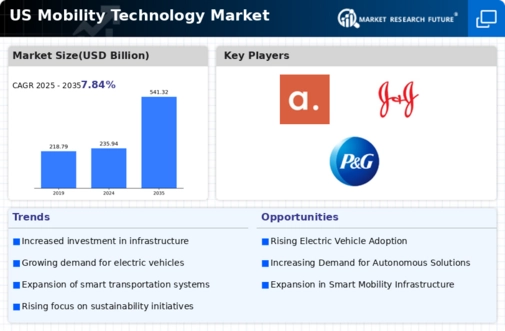The US Mobility Technology Market is witnessing significant shifts driven by various factors. One of the key market drivers is the increasing emphasis on sustainable transportation solutions, as cities across the US are aiming to reduce their carbon footprints. This shift towards electric vehicles (EVs) and the development of charging infrastructure is encouraging growth in the sector. Government initiatives at both federal and state levels support this transition, including incentives for EV purchases and funding for the installation of charging stations.
Furthermore, advancements in autonomous vehicle technology are reshaping how people and goods move across the country.The integration of artificial intelligence and machine learning into transportation systems allows for improved traffic management and safer driving experiences. Recent trends highlight a growing consumer preference for shared mobility options, including ride-hailing and car-sharing services, as urban populations seek convenience and cost-effectiveness. This trend aligns with the younger generation's inclination towards minimal vehicle ownership. The rise of micromobility solutions, such as electric scooters and bikes, is filling the gap for short-distance travel, particularly in urban areas.
Opportunities in the US market include the expansion of mobility-as-a-service (MaaS) platforms that allow users to access various transportation options through a single application, increasing overall mobility efficiency.As the demand for integrated and seamless travel experiences grows, innovative solutions that combine public transportation with private services will become increasingly important. The focus on smart cities and the incorporation of IoT technology in transportation networks present additional opportunities to optimize mobility solutions.
The evolution of the US Mobility Technology Market continues to be influenced by governmental policies, technological advancements, and the changing needs of consumers, making it a dynamic space for ongoing innovation.
Source: Primary Research, Secondary Research, Market Research Future Database and Analyst Review













